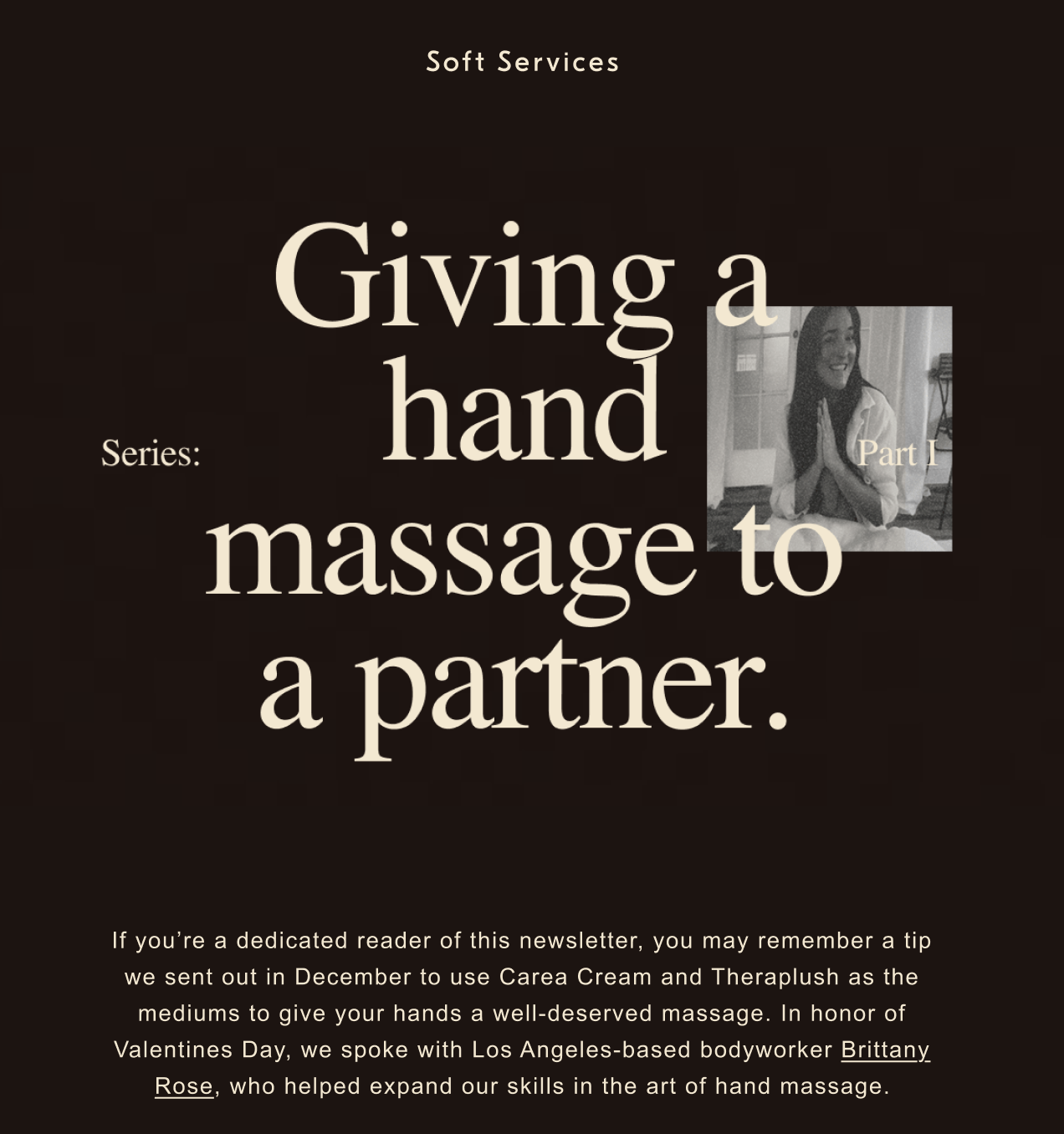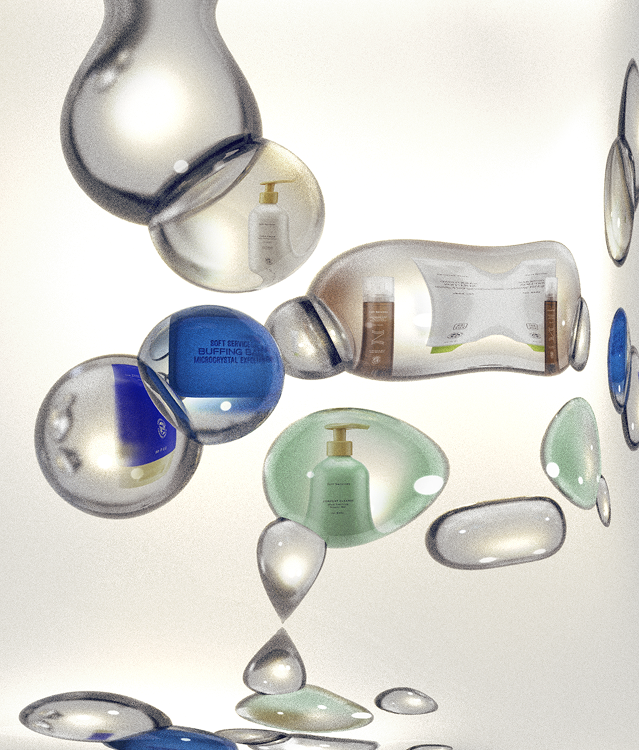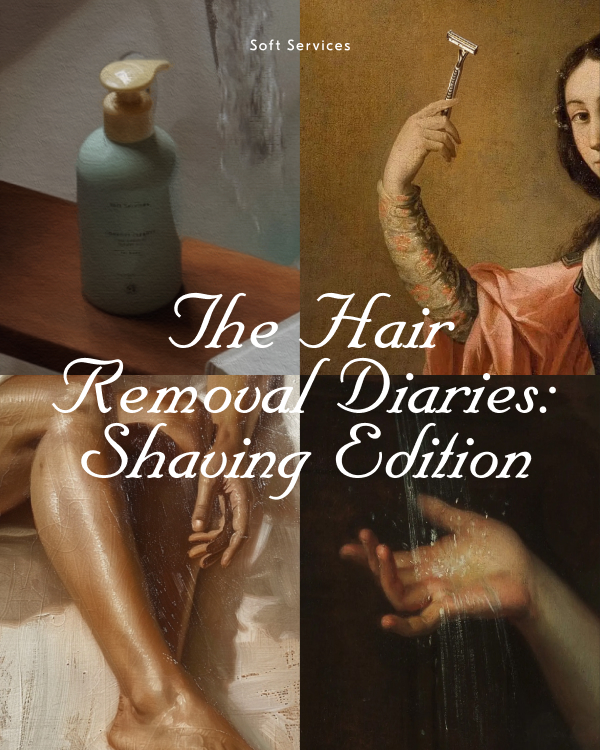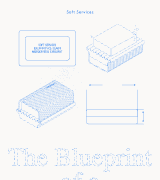I write a lot about wellness and beauty, how the two are inextricably linked, and how both are industrialized in a morally questionable way. Sorry, I should have warned you that we’re getting right into it.
These industries are riddled with clichés and contradictions. The act of taking care of ourselves is both deeply personal and highly communal. We’re supposed to “do less” but also “move more.” I’m constantly tripping over phrases like “movement is the best medicine” and “listen to your body,” rolling my eyes even as they resonate deep within my consciousness.
I’m so, so far away from having it all figured out, but from my conversations with people who seem like they do, on top of other investigative work (published digitally and in my journal), I have a few key takeaways.
- It’s in your best interest to take care of yourself, because nobody else will.
- Taking care of yourself is actually not selfish (I told you, cliché city) as it allows you to be the best version of yourself, which therefore improves other peoples’ lives.
- Being “well” pretty much just means feeling good in your mind, body, and skin.
Digging into that last item for a second — feeling good in your mind, body, and skin are all separate things. The mind part is obvious, I hope, but the body and skin components, while similar, are not synonymous. You see, they have a square-is-a-rectangle thing going on; feeling good in your skin contributes to feeling good in your body, but the reverse is not necessarily true. When I feel good in my skin, I’m setting myself up to feel good in my body, and therefore (bringing it back to point 2) I am a better friend, sister, daughter, co-worker, stranger to everyone in my orbit. Here are my unprofessional tips that’ll accomplish all of the above...
|
|
One of the hallmarks of adulthood is starting to pay attention to the skin on our bodies. And while it’s not the sexiest thing to think about, we all have a little something happening on our skin — dry patches, rashes, etc — so it’s a good idea to consult a trusted resource. For me, that’s Soft Services’ Mass Index, which serves as a visual library of skin conditions with expert-vetted treatment information. Sort of like if Reddit was reliable.
Once you get a bit of professional-grade clarity as to what you’re working with, topically, you can better select products that work well with your skin’s specific needs and preferences. For me and my keratosis pilaris, it’s always the Buffing Bar/Carea Cream combo.
|
|
 If you’re ready to take it to the big leagues, a trip to the dermatologist is probably a wise next step. Unfortunately, I’m not talking about the fun kind of visit where you pop by for a quick tretinoin Rx for no real reason. I’m talking about… a skin check appointment... DUN DUN. If you’re ready to take it to the big leagues, a trip to the dermatologist is probably a wise next step. Unfortunately, I’m not talking about the fun kind of visit where you pop by for a quick tretinoin Rx for no real reason. I’m talking about… a skin check appointment... DUN DUN.
A huge part of skincare, bodycare, and personal care in general, is playing the long-game. In this case, that looks like getting eyes on those suspicious looking moles (cute) before they become problematic. |
|
|
|
This may seem like a radical suggestion in our protein-obsessed society, but let’s get a couple more colors on our plates, okay? Colors = phytonutrients = health benefits like immune support, anti-inflammation, and cellular protection. By feeding our cells with compounds that fight oxidative damage, we’re not only helping our skin glow, but we’re preventing signs of premature aging.
|
|
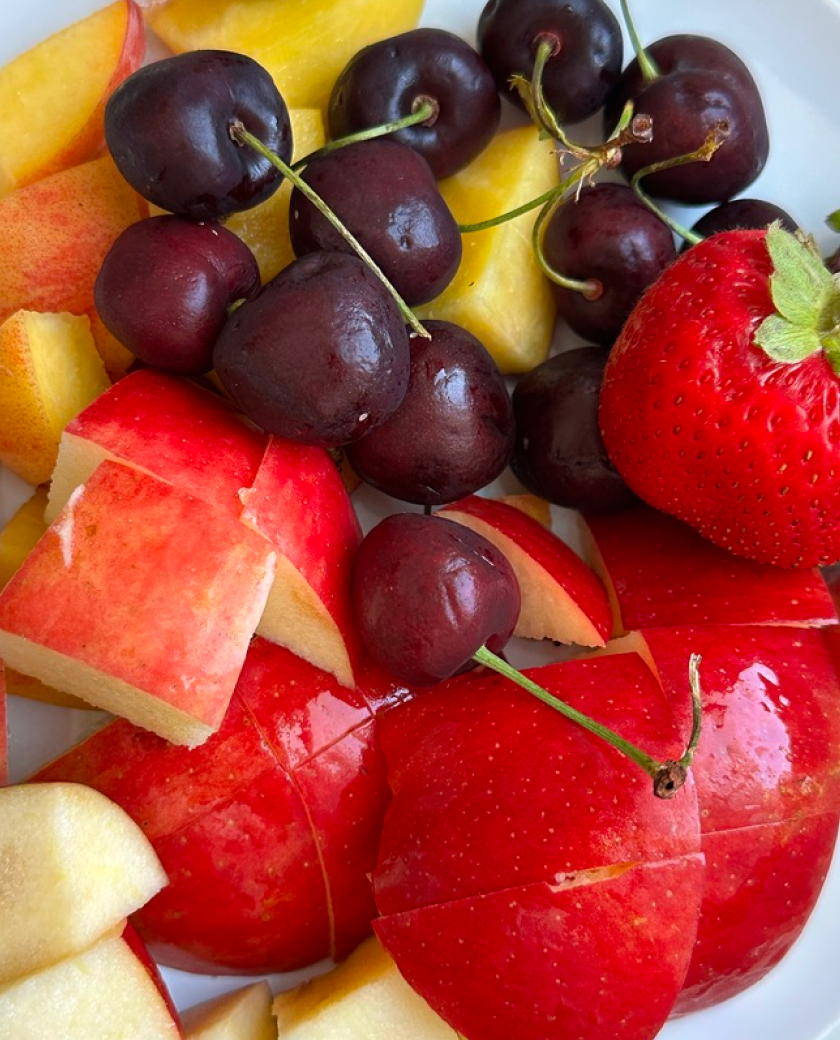 Plus, plants are good for digestion, which means detoxifying waste matter from the body, which means things are flowing how they’re supposed to. I’ll leave it there since I’m not a health coach nor an esthetician (although Sofie Pavitt is and she’s a fellow fiber stan). Plus, plants are good for digestion, which means detoxifying waste matter from the body, which means things are flowing how they’re supposed to. I’ll leave it there since I’m not a health coach nor an esthetician (although Sofie Pavitt is and she’s a fellow fiber stan). |
|
|
|
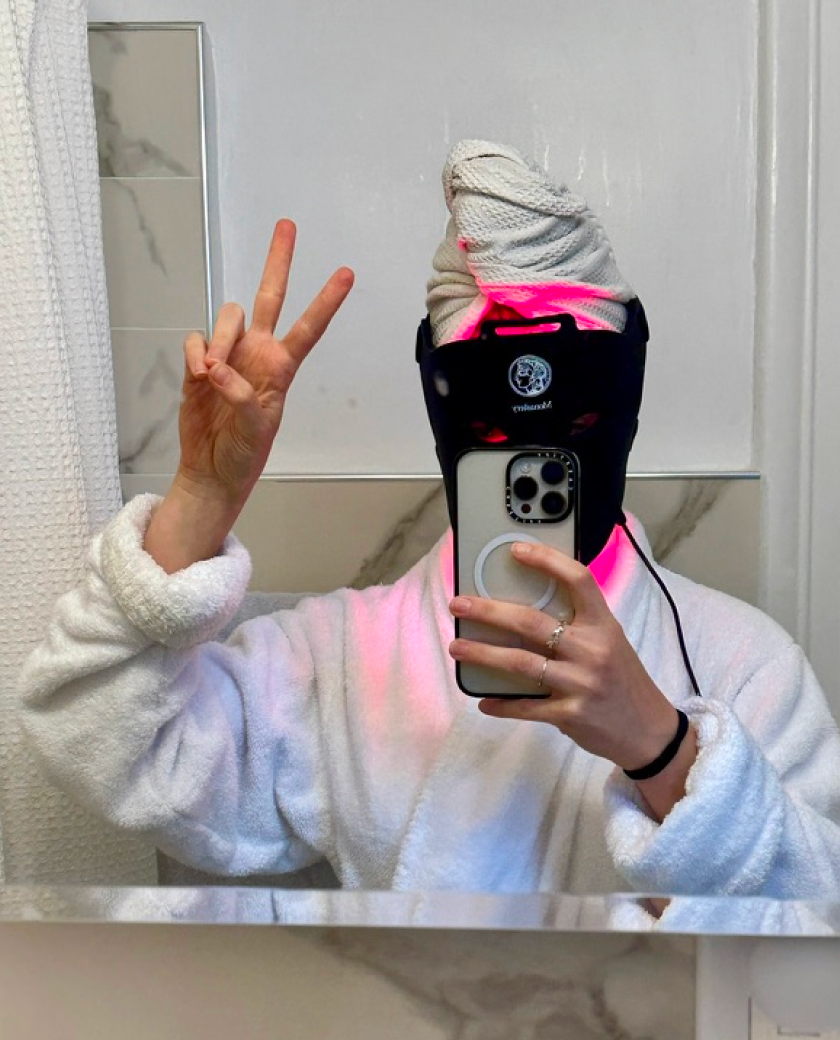 Let’s not underrate the placebo effect, shall we? Beauty products that double as self-care memes are so powerful in giving us the illusion that we’re improving our appearance, which is valuable in and of itself. Come on, you can’t argue that a multi-step, aesthetically-pleasing body care routine will fix everything. The simple act of unwrapping a fresh Buffing Bar and (gently!) exfoliating my skin brings me a) joy and b) a sense of pride in my ability to take care of myself. Let’s not underrate the placebo effect, shall we? Beauty products that double as self-care memes are so powerful in giving us the illusion that we’re improving our appearance, which is valuable in and of itself. Come on, you can’t argue that a multi-step, aesthetically-pleasing body care routine will fix everything. The simple act of unwrapping a fresh Buffing Bar and (gently!) exfoliating my skin brings me a) joy and b) a sense of pride in my ability to take care of myself. |
|
|
|
Best case scenario: the beauty product(s) actually produces its desired effect. This happened when I started giving myself hand massages with Theraplush — a small little luxury which paid off in the form of ultra-soft hands and a physical reminder of self-care sitting pretty on my nightstand. Worst case scenario: you take a selfie and sit with the satisfaction of giving yourself some extra tenderness. Self esteem comes from esteemable acts, and acts of kindness towards yourself are included.
|
|
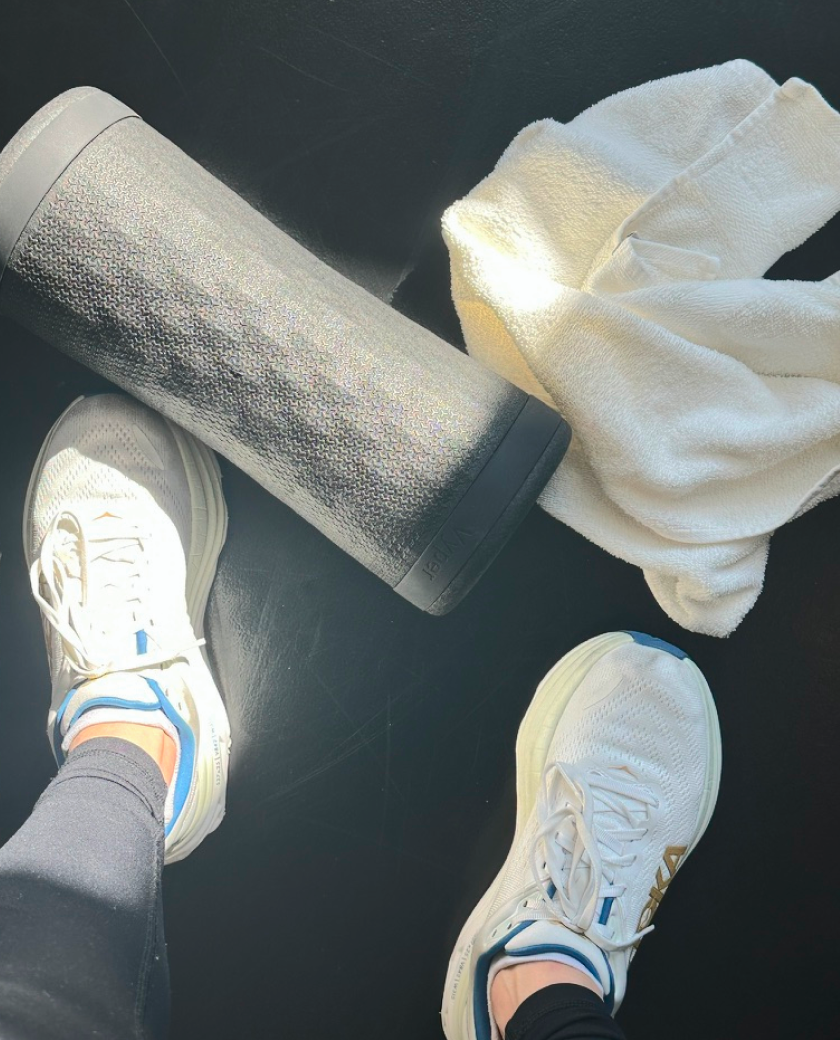 Despite common misconceptions, sweating is actually good for your skin. While its main job is to cool you down, sweat can help flush away surface bacteria and debris—and it contains antimicrobial peptides (like dermcidin) that support your skin’s microbiome. Bonus: its slightly acidic nature helps maintain a healthy skin pH. Despite common misconceptions, sweating is actually good for your skin. While its main job is to cool you down, sweat can help flush away surface bacteria and debris—and it contains antimicrobial peptides (like dermcidin) that support your skin’s microbiome. Bonus: its slightly acidic nature helps maintain a healthy skin pH. |
|
|
|
The issue is what happens after you sweat — the fabrics it comes into contact with and how long it hangs out on your skin. As long as you’re diligent about your sweat-iquette (come on, how good is that), you’re looking at the cheapest form of skincare on the market. If you’re prone to body acne, I’d recommend giving Clearing Mist a whirl, although a standard rinse with Comfort Cleanse usually covers my bases. |
|
Sunscreen sunscreen blah blah blah. I find the sunscreen discourse to be the most nagging of all of the beauty “shoulds.” And yet. And yet.
|
|
 I will be the first to admit that I love being tan. In fact, I firmly believe that I’m prettier in the summer (you don’t have to comment on that, I know it’s true). However, the ugliest thing, in my opinion, is being burnt. Not only is it visually upsetting, it causes quite a bit of anxiety over on the melanoma side of things. It’s best not to literally Icarus yourself, especially when the negative outcomes are both wrinkle-causing and life-threatening. Hey, it’s my job to scare you a little. I will be the first to admit that I love being tan. In fact, I firmly believe that I’m prettier in the summer (you don’t have to comment on that, I know it’s true). However, the ugliest thing, in my opinion, is being burnt. Not only is it visually upsetting, it causes quite a bit of anxiety over on the melanoma side of things. It’s best not to literally Icarus yourself, especially when the negative outcomes are both wrinkle-causing and life-threatening. Hey, it’s my job to scare you a little. |
|
|
|
|
|
|


